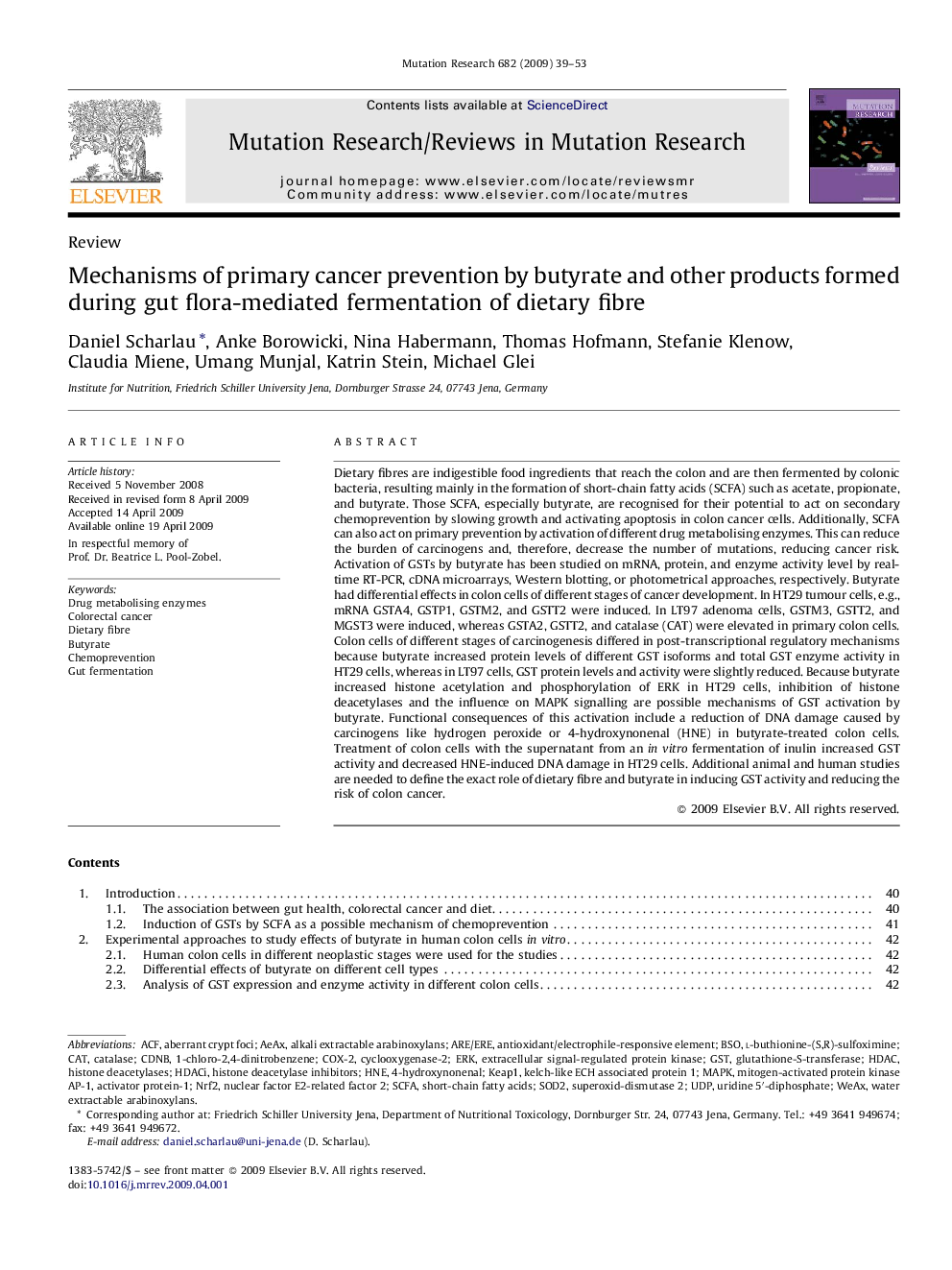| کد مقاله | کد نشریه | سال انتشار | مقاله انگلیسی | نسخه تمام متن |
|---|---|---|---|---|
| 2149726 | 1089878 | 2009 | 15 صفحه PDF | دانلود رایگان |

Dietary fibres are indigestible food ingredients that reach the colon and are then fermented by colonic bacteria, resulting mainly in the formation of short-chain fatty acids (SCFA) such as acetate, propionate, and butyrate. Those SCFA, especially butyrate, are recognised for their potential to act on secondary chemoprevention by slowing growth and activating apoptosis in colon cancer cells. Additionally, SCFA can also act on primary prevention by activation of different drug metabolising enzymes. This can reduce the burden of carcinogens and, therefore, decrease the number of mutations, reducing cancer risk. Activation of GSTs by butyrate has been studied on mRNA, protein, and enzyme activity level by real-time RT-PCR, cDNA microarrays, Western blotting, or photometrical approaches, respectively. Butyrate had differential effects in colon cells of different stages of cancer development. In HT29 tumour cells, e.g., mRNA GSTA4, GSTP1, GSTM2, and GSTT2 were induced. In LT97 adenoma cells, GSTM3, GSTT2, and MGST3 were induced, whereas GSTA2, GSTT2, and catalase (CAT) were elevated in primary colon cells. Colon cells of different stages of carcinogenesis differed in post-transcriptional regulatory mechanisms because butyrate increased protein levels of different GST isoforms and total GST enzyme activity in HT29 cells, whereas in LT97 cells, GST protein levels and activity were slightly reduced. Because butyrate increased histone acetylation and phosphorylation of ERK in HT29 cells, inhibition of histone deacetylases and the influence on MAPK signalling are possible mechanisms of GST activation by butyrate. Functional consequences of this activation include a reduction of DNA damage caused by carcinogens like hydrogen peroxide or 4-hydroxynonenal (HNE) in butyrate-treated colon cells. Treatment of colon cells with the supernatant from an in vitro fermentation of inulin increased GST activity and decreased HNE-induced DNA damage in HT29 cells. Additional animal and human studies are needed to define the exact role of dietary fibre and butyrate in inducing GST activity and reducing the risk of colon cancer.
Journal: Mutation Research/Reviews in Mutation Research - Volume 682, Issue 1, July–August 2009, Pages 39–53